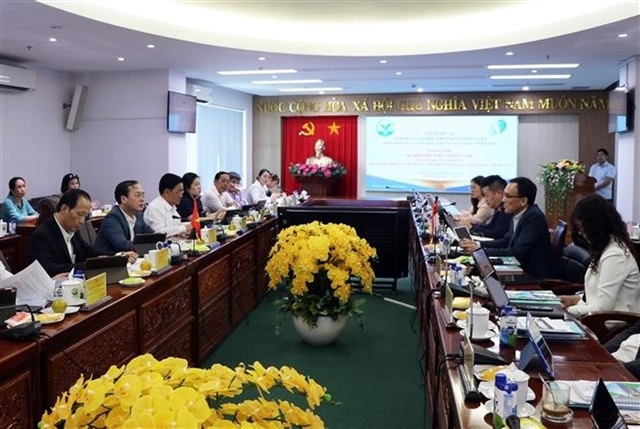Quality, price key to conquering Japan: Experts
Quality, price key to conquering Japan: Experts
To gain entry to the Japanese market, Vietnamese firms should pay attention to two factors, quality and price, experts told a roundtable on “Selling products to Japanese market” in HCM City on Wednesday.

Yuichiro Shiotani, general director of Aeon Topvalu Viet Nam, said Japan is a dream market for many businesses around the world and is therefore very competitive.
He said the value of a product is defined by its quality and price, meaning if a product’s quality improves, its value goes up.
So if a foreign company wants to export to Japan, it should know how they are going to compete with the many rivals who sell the same products as them, he said.
“If the quality is the same, Japanese consumers will choose the cheaper product regardless of whether it is imported or not.”
He gave the example of the mango, a favourite fruit among Japanese consumers, including for him.
Viet Nam’s cat chu mango is sold in Japan at higher prices than mangoes from Thailand and the Philippines though its quality is not higher.
It is not consistent in terms of sweetness, and consumers would not be happy if they have to pay the same price for both a sweet and a sour mango, he said.
“I talked to Japanese farmers about this mango issue. They told me controlling the sweetness of mangos is totally doable. It is not complicated; it is about preservation after harvest and during delivery.”
He said if firms want to sell products to the Japanese market, the best way is to go to the country and learn the habits of consumers there.
“They should compare their products with those being sold on the market to make improvements maybe by improving quality or reducing prices.”
Nguyen Manh Viet, CEO of Fosella, which helps take Vietnamese firms to the Japanese market, said it can take up to a year for his clients to secure a contract to export to Japan since it is a very demanding market in terms of quality.
He cited the example of a confectionery company which lost a Japanese order because of changing one of their suppliers without prior notification.
A textile company paid a similar price for not following proper procedures during the shipping stage, he said.
“The company used three-layer carton boxes to transport the products instead of the five-layer ones the Japanese partner had requested. The goods were damaged and the Vietnamese company had to bear the loss.”
He said these examples show how crucial it is for Vietnamese firms to ensure quality assurance and adopt quality control processes.
Sometimes, even when they have all the required information about the standards and requirements expected in the Japanese market, Vietnamese firms struggle to enter this market.
Shiotani said Vietnamese rules and regulations are sometimes even stricter than Japan’s but their failure to follow them in practice is the main reason why Vietnamese firms cannot make products with guaranteed quality, he said.
“The problem with firms is that they do not see it is a problem when they cannot follow all the rules and requirements. But it is not just a problem in Viet Nam; it can be seen in other markets as well.”
Firms should close the gap between what they say in theory and what they do in practice to improve the quality of their products, he added.
According to Nguyen Thi Hong Minh, president of the Association of Food Transparency, many Vietnamese firms underestimate the importance of having an eco-system where firms and farmers work together to ensure consistent quality.
“Trading companies just care about buying and selling products. To come back to [Shiotani’s] mango story, if [farmers] can make sure the land is good and the use of fertilisers is adequate, then its quality can be kept consistent, but few companies care about these things.”
What firms should do is to work with farmers and monitor them to ensure product quality, she said.
She said one of the problems with farmers in Viet Nam is that they “want to make money fast.”
There are many farmers who follow good agricultural practices, but they are content to sell to traders who come to their farms.
“There should be a way to connect farmers via groups or co-operatives so that members can create a community where we cross-check one another to make sure everyone complies with quality standards.
“If we can do that, buyers will come to us and not the other way around.”






















